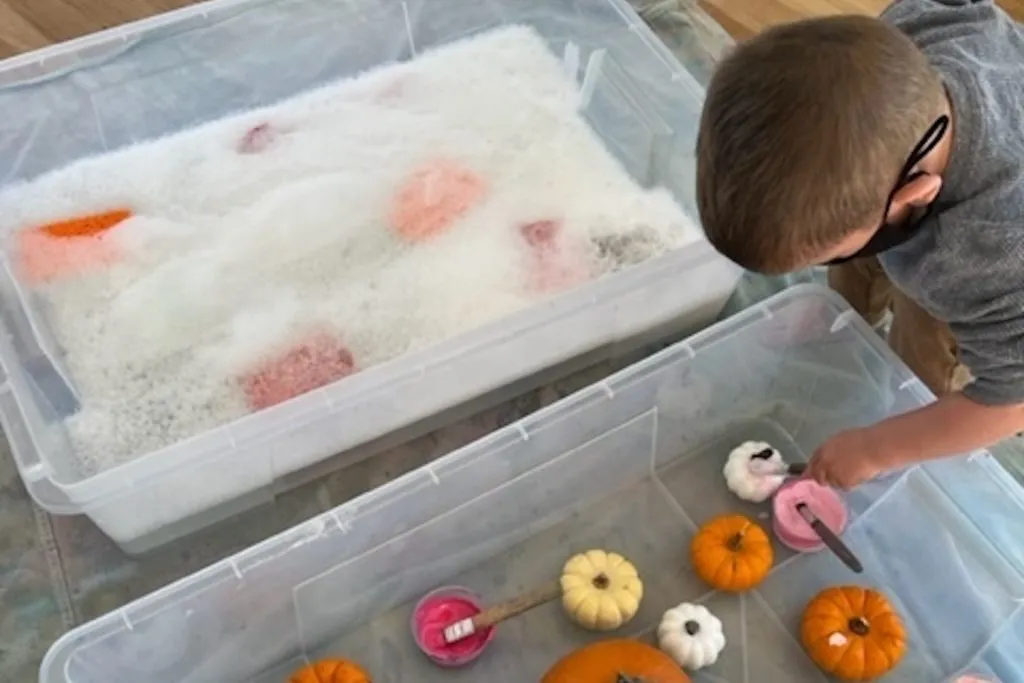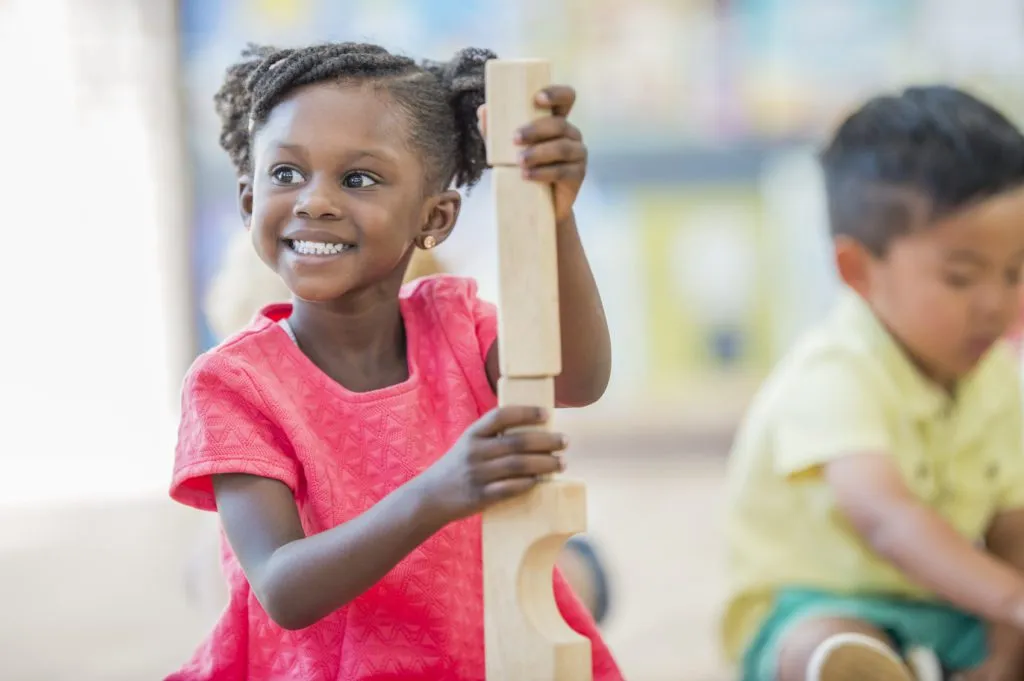Why I Don’t Go to Social Media for Activity Ideas Anymore

Who can resist social media platforms, chock-full of super cute ideas and activities in the palm of your hand? Raise your hand if you have ever spent a portion of your day reading posts, pinning lesson plan ideas, and surfing the net for new activities and hashtags.
Same here!
It is like chatting inside a giant (digital) breakroom where your side of the room is in the middle of Nebraska and your colleague’s is in Rome.
And while social media is a great place to converse with colleagues and share ideas, photos, challenges, and special moments in your practice, pursuing idealized images and activities can also have unintended impacts on our teaching practice that we should all consider.
Does the Idea Consider Individual Differences in Your Classroom?
Those children shown smiling in that social media post have individual differences that made that activity successful for them. The learning experiences you plan should reflect the strengths, needs, and interests of the children in your class.
It can be fun to shop on an online marketplace, but does that online lesson address the varying temperaments in your classroom? Is it designed to be responsive to the varying levels of development children are demonstrating in your classroom? The materials, topics, and teaching strategies you use during a lesson also depend on the classroom and community culture. By taking these ideas into account when planning classroom experiences, you convey the message that every child and family is important.
How Does That Photo Op Connect to Observation?
Social media or the Internet are not bad places to get your creative juices flowing at the start of a study topic or when you feel you have run out of ideas for your lessons. But the most successful topics and activities don’t just originate from algorithms but from your observations of and interactions with the children in your class!
The most meaningful way to teach content is to build on what you observe about children’s knowledge, interests, and experiences. Teachers observe so they can design a tailor-made experience or activity that will connect to what a child knows and will understand.
It’s Quick, but Is It Quality?
A study titled “The Supplemental Curriculum Bazaar: Is What’s Online Any Good?” by Morgan Polikoff with Jennifer Dean (2019) used a rubric that captured dimensions of quality in curriculum materials to review online materials. The study found that most of the materials on some of the most popular online marketplaces to share and sell materials and lessons, were rated 0 or 1 on an overall 0–3 quality scale.1
So what should teachers look for in a quality activity? An activity should go beyond a list of materials and should include four key ingredients that I think of as “the four essential S’s.”
- Standards! What learning objectives does this activity meet? Does the activity support a child’s development and learning in meaningful ways? Does it address multiple objectives for development and learning? Just like real-life experiences, high-quality learning experiences tend to integrate many important objectives.
- Suggestions on how to include children with disabilities, multilingual learners, and children whose behaviors you find challenging help educators to scaffold the activity to meet the varying levels of knowledge, skills, and abilities that children are demonstrating in their classrooms.
- Simple ideas that are suited for the home environment can help make a strong home-school connection by enhancing family engagement.
- Be selective! This last s is not an ingredient for the activity but one just for you! I have to confess that in the past I have chosen activities based on if they looked fun or if they had a “cute” outcome. Now I select activities based on my observations of children’s interests, questions, development, needs, and cultures. Someone on social media may not have anything in common with the children in your class, their families, your colleagues, or your community. Lastly, examine why you are looking for more ideas. Are you intentionally seeking activities that will support the children’s interests, or are you worried you don’t have a “full” schedule? If you use a Teaching Guide from Teaching Strategies for your daily plans, the study already includes experiences that provide children with opportunities to explore the study topic firsthand. This gives educators time to individualize those activities, conduct observations, and reflect on their teaching practice. Make sure you are providing enough time in your day for children to have meaningful explorations and lead their own learning experiences.
Still Want to Surf the Internet and Get Quality Content? Try the Hub!
Want to surf the net while at the same time interacting with and contributing to quality content? Try expanding your water cooler conversations on the Hub. The Hub is the new gathering place on your SmartTeach dashboard where you can build camaraderie, gain support, and gather and share quality ideas and activities. Because The Hub is a home for both fellow teachers using The Creative Curriculumand early childhood development and learning experts from within Teaching Strategies, you can rest assured that it is devoted to promoting best practices and offering developmentally appropriate ideas.
Interested in joining the conversation? Join us in The Hub.
Join Now
About the Author: Angela Searcy, EdD

An educator since 1990, Angela holds a B.A. in English and Secondary Education with teacher certification, an M.S. degree in Early Childhood Development from Erikson Institute with a specialization in Infant Studies, a doctorate in Education, and a certification in Infant and Early Childhood Mental Health. Her research centers on brain-based learning assessed by CLASS and its correlation to aggressive behaviors in preschool classrooms and the efficacy of the Push Past It Framework to support mindful self-regulation. She is the author of two books, Push Past It!: A Positive Approach to Challenging Classroom Behaviors (2019) and Elevating Equity: Advice for Navigating Challenging Conversations in Early Childhood Programs (2023). She is also an adjunct faculty member at Erikson Institute and a coach mentor on The Hub.
On a personal note, Angela loves teaching, learning, traveling, and her family: her husband of 28 years; their four children; and their dog, Honeybee.
Research
1. Polikoff, M. & Dean, J. (2019). The supplemental curriculum bazaar: Is what’s online any good? Washington, DC: Thomas B. Fordham Institute. https://fordhaminstitute.org/national/research/supplemental-curriculum-bazaar


